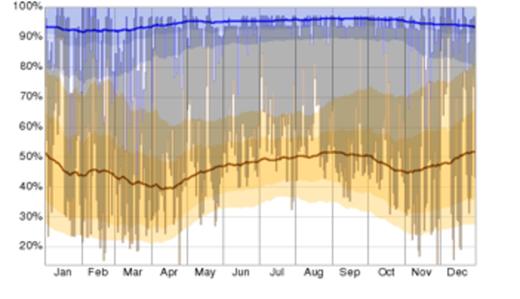Abstract
Background: Sickle cell patients suffer from painful vaso-occlusive episodes (VOE) that interrupt patients' lives and productivity and lead to emergency department visits and hospitalizations and, on occasion, death. The VOE in sickle cell disease (SCD) accounts for 90% of hospital admissions for patients with SCD and constitute a financial burden on both patients and hospitals. Efforts to prevent pain crises have failed to establish a causal relationship in about 40% of reported cases. The remaining 60% of known causes of VOE are related to dehydration, febrile illness, and infections. The Emory University Sickle Cell Center at Grady Memorial hospital has been providing specialized services for SCD patients for 30 years. The center includes a 24/7 acute care unit (ACU) that is staffed by SCD providers who specialize in the management of VOE. The patients are started on intravenous narcotics and fluids within 30 minutes of presenting to the ACC. After eight hours of management, the patient is then either discharged home if the VOE is controlled or admitted to the hospital for continued management. Annually, around 3000 ACU visits are recorded with a 17% hospital admission rate. When patients are questioned on the reason for their presentation, “weather change” is frequently reported as the trigger of the VOE. A review of the literature reveals scant data to support the hypothesis that weather-related changes trigger sickle cell pain crises.
Methods: In a retrospective evaluation of patient visits over the last 4 years, we identified temperature and humidity measurements for that period of time and attempted to correlate them with the frequency of ACU visits. We used the “weatherspark” website that records weather changes for the city of Atlanta because > 90% of our patients reside in the city.
Results: The four-year review of weather data and ACU visits did not show a direct correlation between graphs of temperature and humidity, and the number of ACU visits. The annual number of visits to the ACU was 2930, 2467, 3195 and 3370 for the years 2011, 2012, 2013 and 2014 respectively. The average admission rate was 16.6% overall, and the admission rate in the years 2011, 2012, 2013 and 2014 was 12.4%, 14.9%, 19.6% and 19.6% respectively. The attached figure has an example of the year 2013 charts for temperature, humidity, sickle cell acute care visits and hospital admission graphs.
Conclusion: The retrospective analysis does not reflect a direct correlation between the temperature and humidity graphs and the number of ACU visits and hospital admissions. Given the volume of data analyzed, it is unlikely that there is any correlation between temperature and humidity variations and either acute care visits or admissions.
Atlanta, GA- ACU visits, Hospital admissions, Temperature and Humidity Charts for 2013: DATA from weatherspark.com
No relevant conflicts of interest to declare.
Author notes
Asterisk with author names denotes non-ASH members.




This feature is available to Subscribers Only
Sign In or Create an Account Close Modal